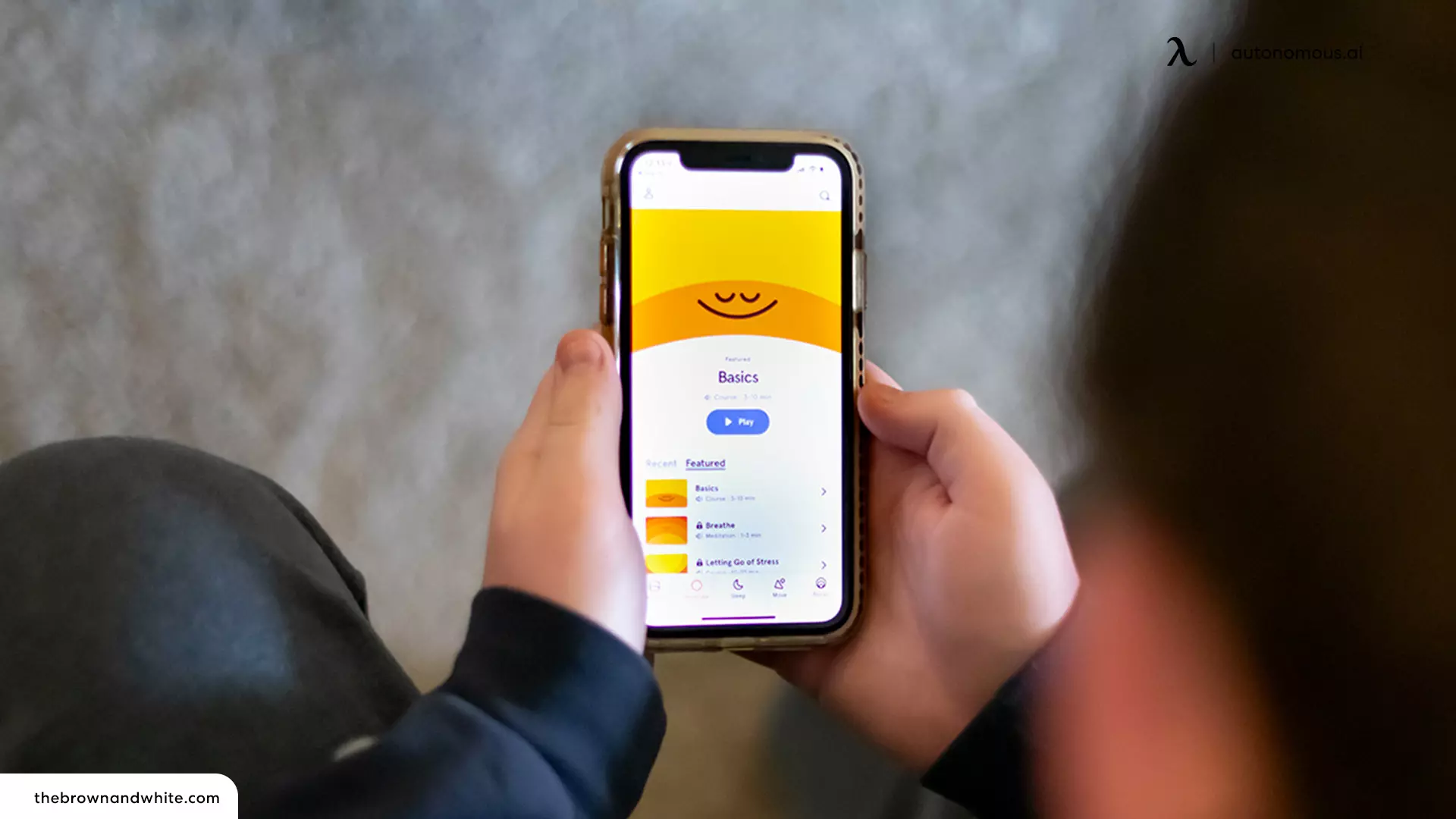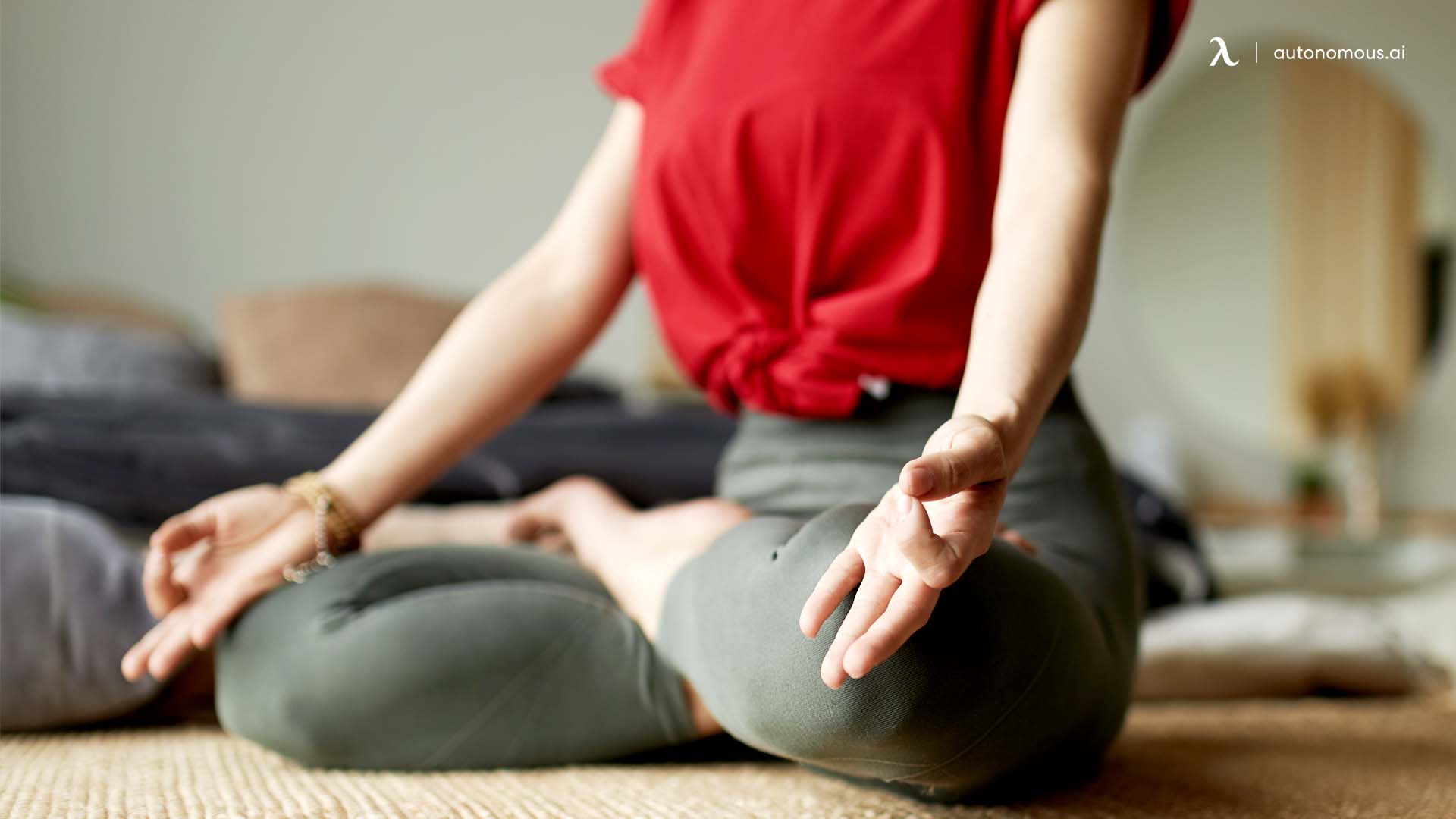
Headspace App Review: Revolutionizing My Workday with Meditation
Table of Contents
In today’s fast-paced work environment, maintaining mental and physical well-being can be challenging. That’s where the Headspace app comes into play. In this review, I'll share my experience with the Headspace: Sleep & Meditation app, and how it has transformed my daily routine. We’ll also compare it to its biggest competitor, Calm, and answer some common FAQs.
1. What is Headspace?
The Headspace meditation app is a comprehensive platform designed to help users integrate mindfulness into their daily lives. Founded in 2010 by Andy Puddicombe and Richard Pierson, the app offers a wide range of guided meditations, sleep aids, breathing exercises, and mindfulness techniques. The goal is to help users manage stress, improve focus, and get better sleep—key components of a balanced and productive life.
How Headspace Works
Headspace works by providing guided meditation sessions that range from beginner to advanced levels. These sessions cover various topics such as stress relief, focus enhancement, sleep improvement, and general mindfulness. Whether you’re new to meditation or a seasoned practitioner, Headspace has something for everyone. The app’s user-friendly interface allows you to easily navigate through different categories, ensuring that you find the right session for your needs.
The Headspace meditation app also includes features like Mindful Moments that remind you to take short breaks during your day, and Sleepcasts, which are calming audio stories designed to help you fall asleep faster. The content is curated by experts and even offers specific sessions led by therapists, making it a valuable tool for mental health support.
How Much Does Headspace Cost?
The cost of Headspace varies depending on the subscription plan you choose. While the app offers a free trial with limited access to its features, the premium subscription unlocks the full range of content. The standard cost is $12.99 per month or $69.99 per year. If you’re a student, you can get Headspace at a discounted rate, making it more accessible. There’s also a family plan that allows up to six accounts, which is great for households that want to practice mindfulness together.
Is Headspace worth it? In my experience, the investment in Headspace has paid off significantly in terms of improved focus, better sleep, and reduced stress. It’s more than just an app—it’s a long-term commitment to your well-being.
2. My Journey with the Headspace App
Using the Headspace app has been a journey of self-discovery and improved mental well-being. As someone deeply invested in promoting office health, I was particularly interested in how the app could help me manage stress, improve focus, and enhance overall productivity during my workday.
Starting My Day with Mindfulness
One of the first features I explored was the Morning Meditations. These sessions are designed to set a positive tone for the day, helping you start with clarity and calm. I found the guided meditations particularly helpful in centering my thoughts before diving into the day's tasks. The short 5 to 10-minute sessions are perfect for those busy mornings when time is of the essence. I noticed that starting my day with these meditations allowed me to approach my work with a clearer mind and more focused energy.
For those who prefer a more physical start to their day, pairing these morning meditations with a morning stretching routine for beginners can create a well-rounded and invigorating start. Stretching alongside mindfulness can enhance the benefits, preparing both the body and mind for the day ahead.
For those who spend a lot of time seated, starting your day with meditation at work can be even more effective when combined with a leg stretch routine. Stretching helps improve circulation and prepares your body for the day ahead, making it easier to stay focused and energized during morning tasks.

Mindful Breaks: A Game Changer
As the day progresses, it’s easy to get caught up in the whirlwind of tasks and deadlines. This is where Headspace truly shines with its Mindful Moments feature. These are gentle reminders to take a break, breathe, and reset your mind. I found that integrating these moments into my workday helped me maintain a steady level of productivity without feeling overwhelmed.
I particularly enjoyed the “Focus” sessions, which are short meditations designed to improve concentration. These sessions became my go-to during the afternoon slump when my energy would typically dip. Instead of reaching for another cup of coffee, I’d take five minutes to meditate. The result? A noticeable boost in focus and mental clarity that carried me through the rest of the day.
Headspace excels in promoting the importance of mindful breaks throughout the workday. Integrating these short breaks with meditation can significantly enhance your ability to stay productive and reduce stress. For a deeper understanding of how mindfulness practices can alleviate workplace stress, exploring the differences between mental health and emotional health can offer valuable insights.
For those working from home, these mindful breaks can be an excellent complement to a work-from-home workout routine, ensuring that both the body and mind stay active and engaged throughout the day.
If you ever find yourself struggling to stay productive due to mental blocks or feelings of depression, the app’s targeted sessions might not be enough on their own. In such cases, it’s helpful to understand and address mental block depression—knowing the underlying causes can make your mindfulness practice more effective.

Enhancing Sleep Quality with Sleepcasts
The Headspace app also excels in promoting better sleep, which is crucial for overall well-being and workplace performance. The Sleepcasts—narrated audio experiences that combine soothing voices with calming sounds—have become a staple in my nightly routine. Each Sleepcast lasts about 45 minutes and offers a unique, relaxing story that gently guides you to sleep.
Before discovering Headspace, I often struggled with racing thoughts at bedtime. Now, I look forward to unwinding with a Sleepcast, knowing it will help me drift off to a peaceful slumber. I particularly enjoy the variety of stories available, from the calming sounds of a rain-soaked forest to the comforting murmur of city streets at night. Each one is designed to lull you into a deep, restful sleep, leaving you refreshed and ready to tackle the next day.
If you’re someone who struggles with sleep, consider creating a dedicated meditation space in your home or office. You can explore ideas for an office meditation room to make the experience even more calming and conducive to relaxation. Incorporating a best meditation chair into this space can further enhance your practice, providing comfort and support as you unwind. However, if you’re facing significant work-related stress, it might be worthwhile to explore options like requesting stress leave from work. This could be an important step in giving yourself the time and space needed to fully recover, with Headspace supporting your mental health throughout the process.
.webp)
3. Calm vs. Headspace
When it comes to meditation apps, the comparison between Headspace and Calm is inevitable. Both are leaders in the field, but they cater to slightly different needs and preferences.
Meditation Content and Structure
Headspace offers a more structured approach to meditation, with guided sessions that are easy to follow, especially for beginners. The app is known for its clear, concise instructions and a well-organized library of content. The structure of Headspace is ideal for those who prefer a more disciplined approach to their mindfulness practice.
In contrast, Calm leans towards a more fluid and varied experience. It offers an extensive library of sleep stories, music, and nature sounds, which are perfect for those who enjoy a more immersive and sensory experience. Calm also has guided meditations, but they tend to be less structured than those in Headspace, offering a bit more freedom for users to explore at their own pace.
Sleep and Relaxation
When comparing the sleep aids of both apps, Calm might have the upper hand if you’re looking for a broader range of sleep stories and relaxing sounds. However, Headspace’s Sleepcasts are specifically designed to gently guide the mind into a state of relaxation, which I found incredibly effective for improving sleep quality. The structured yet soothing nature of Sleepcasts made them a perfect fit for my bedtime routine.
For those who prioritize sleep in their wellness journey, Calm might offer more variety, but if you’re looking for a more focused and effective approach to falling asleep, Headspace delivers with its tailored content.
User Interface and Experience
In terms of user experience, Headspace wins points for its clean, minimalist design that’s both inviting and easy to navigate. The app’s interface is intuitive, making it easy to find the right meditation or sleep aid without feeling overwhelmed. On the other hand, Calm’s interface is visually stunning with rich imagery and soothing colors, which adds to the overall relaxation experience.
Which is Better for You?
Ultimately, the choice between Headspace and Calm comes down to personal preference. If you’re someone who appreciates a structured approach with clear guidance, Headspace is likely the better option. However, if you enjoy a more immersive experience with a wide range of content, Calm might be more your style.
For those considering an investment in their mental health, both apps offer tremendous value. However, if you’re still undecided, you might want to explore other mindfulness tools, such as exploring zen therapist office decor ideas to create a calming therapist workspace that complements your meditation practice.
4. FAQs About Headspace
Does Headspace cost money?
Yes, Headspace offers a subscription-based model with both monthly and yearly plans. While there is a free version with limited content, the full experience requires a premium subscription.
Is the Headspace app free?
The app itself is free to download, but access to the majority of its content is behind a paywall. You can try some features for free, but to fully benefit from what Headspace has to offer, you’ll need to subscribe.
Is Headspace worth it?
In my opinion, yes. The wide variety of meditation sessions, sleep aids, and mindfulness exercises make it a valuable tool for anyone looking to improve their mental and physical well-being.
Is Headspace free for students?
Headspace offers a student plan at a discounted rate, making it more affordable for those in school. This plan includes full access to all features of the app.
5. Conclusion
Incorporating the Headspace app into my daily routine has been nothing short of transformative. It’s not just about meditation; it’s about creating a space where you can focus, relax, and recharge—essential elements for a successful career and a balanced life.
For anyone struggling to maintain their well-being in a busy work environment, I highly recommend giving Headspace a try. Whether you’re interested in the structured meditation sessions, the therapist-led guidance, or the calming sleep aids, there’s something for everyone. And if you're still on the fence, consider exploring other options like the BetterMe app to complement your mindfulness practice. If you’re dealing with workplace stress, exploring mindfulness practices, such as Seiza meditation, can offer additional benefits beyond what a typical meditation app might provide. Seiza meditation is particularly helpful for grounding oneself, and it complements the structured approach of Headspace well.
Remember, a healthy mind is the foundation of a healthy career. Let’s continue to revolutionize our workspaces and make them places of growth and well-being.
Stay connected with us!
Subscribe to our weekly updates to stay in the loop about our latest innovations and community news!
Spread the word



/https://storage.googleapis.com/s3-autonomous-upgrade-3/production/ecm/230914/bulk-order-sep-2023-720x1200-CTA-min.jpg)

/https://storage.googleapis.com/s3-autonomous-upgrade-3/production/ecm/230905/Untitleddesign.png)